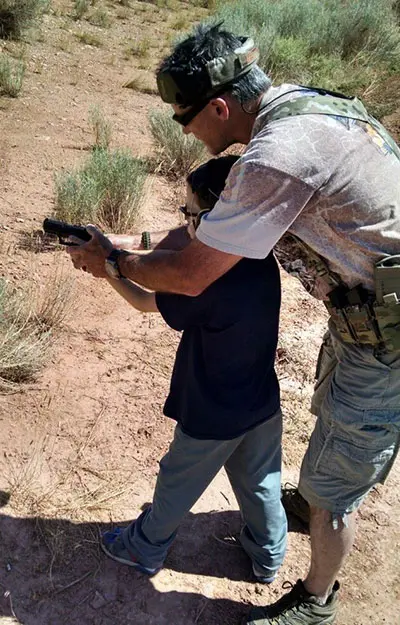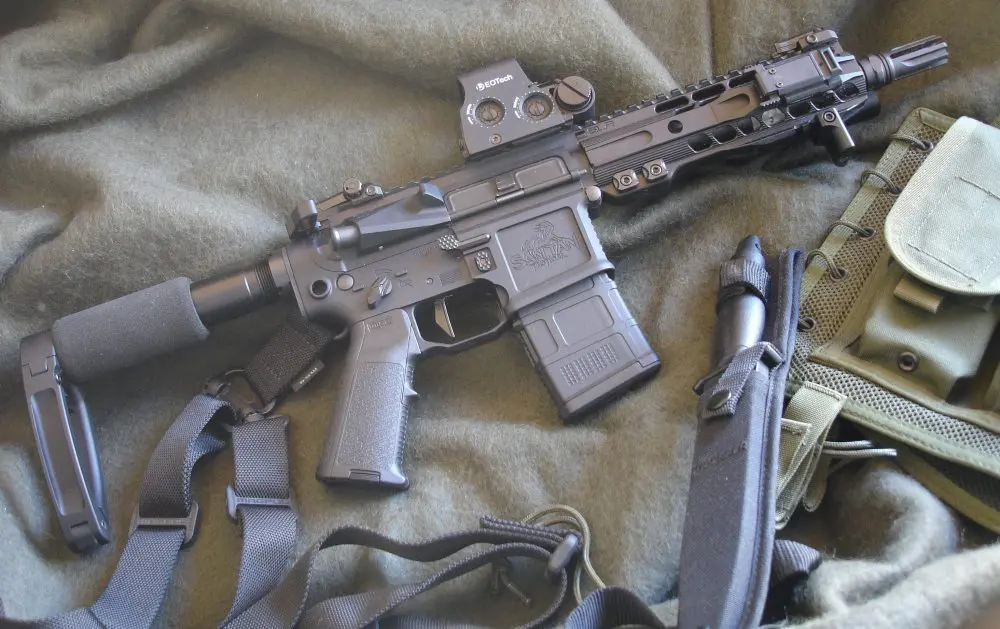
We’ve all seen Internet videos of someone trying a high-powered gun for the first time. Often it ends with an incident of “scope-eye,” a bruised shoulder, dropped weapon, or busted lip. These incidents are supposed to be funny examples of shooting novices grabbing a tiger by the tail. Regardless of spilled blood or damaged limbs, it’s pretty much a guaranteed way to bruise an ego and leave the “shooter” with a negative experience.
If this is a new shooter who had not been around firearms before, this negative experience could result in a bad attitude toward shooters and guns in general, and sets a poor foundation for future positive feelings toward gun-related topics. This does not support our continued political and image battle with those bent on curbing our Second Amendment rights.
What about the messages our children are being fed about guns and the gun-control agenda? Are we comfortable that their school and social talk tracks are fair and balanced, or are they slanted toward a liberal political agenda?
And then there’s Hollywood. Thankfully movie stars always exhibit safe gun handling and marksmanship skills. Not to mention that they never have to reload!
How do we encourage safe, positive firearm experiences that teach proper gun-handling skills, safe manipulation, and realistic scenarios? We need to facilitate positive exposure that will be fodder for excited water-cooler talk for those who are not gun people. Our collective mission should be to bring more new shooters into the fold and give them safe, positive experiences, so we leave a lasting impression that lends support to the shooting world.
Table of Contents
POSITIVE EXPERIENCES WITH FIREARMS
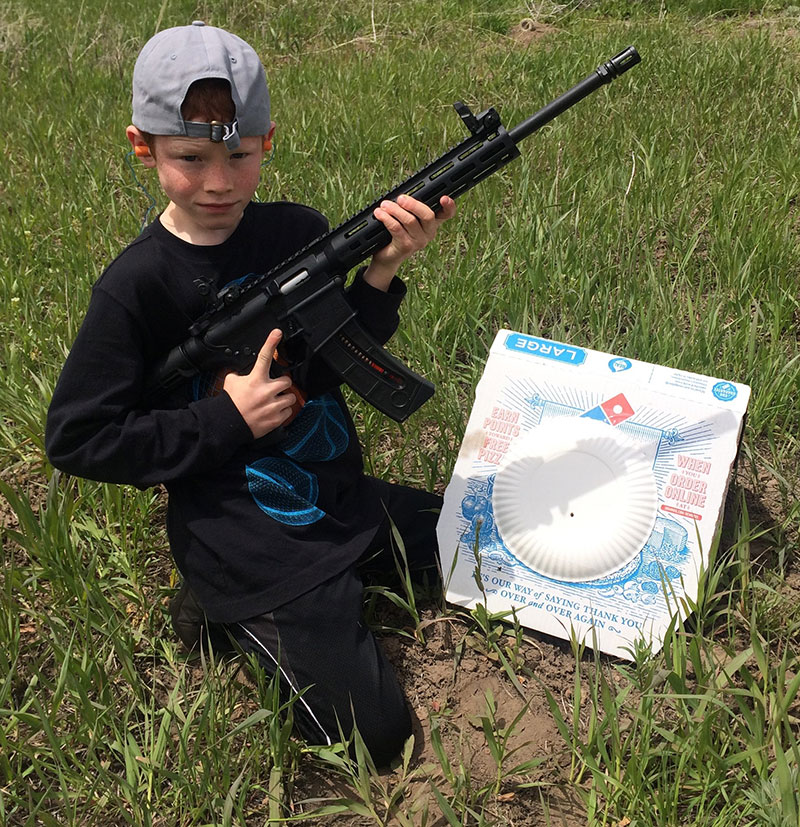
Our goal as shooting mentors should be to safely orchestrate shooting experiences that are fun and totally positive. Consider each shooting event or lesson as an investment in a future gun aficionado who will pass along the love for shooting sports and vote for politicians who will protect those rights. Build in positive reinforcements for appropriate safety, good use of the shooting fundamentals, and strong marksmanship.
Reactive targets are especially satisfying to use as skill builders. Documented marksmanship and improvements should be tracked as well.
Without exception, safety must be drilled into students long before they pick up a firearm. My son could recite and explain the Four Rules of Firearms Safety at a very young age. He has become a solid role model and teacher to our young relatives, his friends, and others.
ADULT LEARNERS VS ADOLESCENT AND CHILD LEARNERS
Are the adults brand-new shooters or shooters who already have some experience? These are two different categories that require somewhat different approaches.
Recently I’ve had the opportunity to coach two brand-new adult male shooters. Both are in their mid-20s. One had never fired a gun of any type, and the other (a nephew) had shot a few times when my son and I took him out on family outings.

Part of the challenge here is “unlearning” any bad habits adult learners may have picked up throughout their life experiences. Whether these bad habits are from actual shooting experience or from a lifetime of watching Hollywood’s depiction of running weapons and/or hours spent playing video shooting games (neither of which are reliable or valid learning options in my mind), it doesn’t matter. “Unlearning” is usually harder than learning.
Regardless of the experience level of the adult learners, drilling in the safety rules is paramount. I can’t tell you how many times I’ve seen new shooters swing their weapon and “lase” someone whenever they turn their body.
Making sure the shooter has a positive experience with the training session is vital. In one of these recent cases, the new shooter had never shot any kind of firearm and was very receptive to advice. He followed the safety rules, did well for a novice shooter, and hopefully went home to Kalifornia with a different perspective about firearms than when he came out on his business trip.
The other new shooter tried several different makes of handguns over a couple of months and several range trips. Then he made a decision and purchased a Smith & Wesson M&P 9mm 2.0. The first trip with the new pistol began with less-than-stellar results, but after troubleshooting a couple of techniques and putting the largest backstrap on the pistol (for his basketball player-sized hands), he had solid hits on his target with all rounds and a smile on his face as he started down the road to mastery of his new weapon. A big win for all!

Both of these shooters are from families and environments where guns are not common. Their positive, safe experiences will hopefully influence those around them over time.
There are some additional techniques I like to use to facilitate increased weapon handling and manipulation training. First, we only load five rounds in pistol mags or ten rounds in rifle (AR-type) mags.
This requires more magazine changes and therefore more practice at weapon manipulation. I also advocate using a mag loading tool if needed, to make that portion of the training as simple as possible. At the end of the shooting session, we break down and clean the firearm and discuss different components, functionality, and maintenance. Then the student reassembles the weapon.
These two techniques facilitate an increase in the exposure to safe weapon manipulation. This ultimately fosters less of a “Boy, do I feel stupid” experience for those who don’t have the skills of more seasoned shooters.
For kids, age-appropriate analogies work well when training new shooters. I like to tell younger shooters to consider that there is a “mile-long light saber that comes out of the end of the weapon that can destroy everything it touches” to remind them not to cover or “lase” things.
Some instructors demonstrate the destructive power of a firearm on a can of soda or a piece of fruit to enhance safety discussions with kids.
TRAINING TOOLS

Using inert plastic guns as safety training props is a good idea. They are often full size and weight and give the student the feel of the weapon without handling a live firearm. They are great for teaching proper grip and stance and general weapon manipulation skills. The fact that they are designed to fit in appropriate holsters is an added benefit when the student advances to the “carry” level.
I know of at least one major police department that uses Airsoft guns as training tools. Often these are cheaper and less finicky than “sim-guns,” and with proper safety procedures and gear can be great tactical training tools for force-on-force work.
These Airsoft replicas can be set up exactly as live guns and give trainees the opportunity to move and function with realistic alternatives to actual weapons. The level of detail and authenticity many Airsoft guns exhibit is truly amazing.
Depending on the environment, pellet rifles and pistols can be great training tools. While potentially lethal, they allow weapons manipulation and positional shooting. The inexpensive cost of ammunition makes training cheap and efficient. Many high-end air rifles are available and have a strong following with certain marksmen. Even the less expensive ones work well for teaching novices to shoot.
The .22 Long Rifle is my favorite caliber for training if all safety rules are covered and there is adequate supervision. I’ve effectively taught many youngsters to shoot with .22-caliber pistols, revolvers, and rifles.
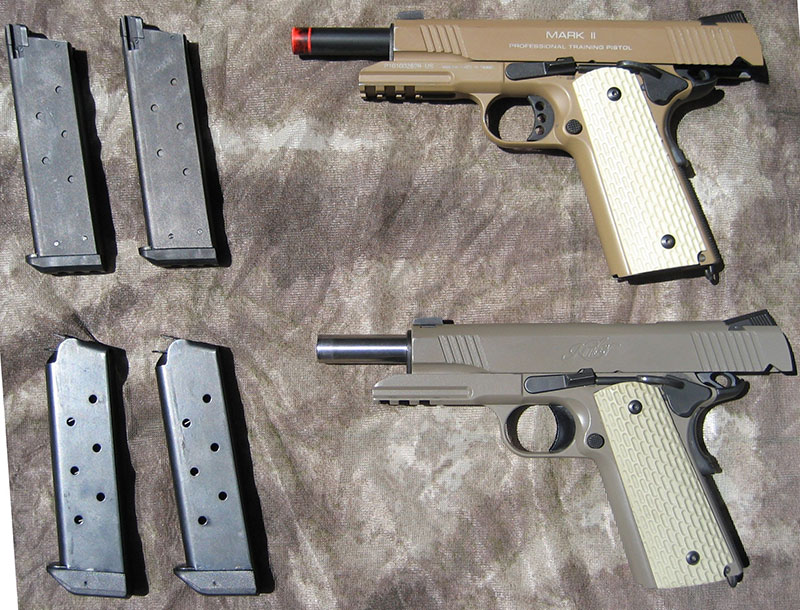
Single-shot rifles are a great training device. The requirement to reload and set up the rifle for each round out generally instills a sense of deliberation that may lead to more attention being paid to the fundamentals, which translates to greater accuracy. In fact, I recall from the Carlos Hathcock story, Marine Sniper, Carlos relating that when he learned to shoot, his instructor allowed him one round per week.
One benefit is that many .22 LR weapons are identical to, or at least exact scaled-down versions of, their larger-caliber brothers and sisters. Being able to use the same manual of arms on a rifle or pistol that has low recoil and muzzle blast yet is a near-exact copy of a more serious weapon is a huge benefit for beginning shooters. In addition, most of the web gear, chest rigs, pouches, and support equipment work with both .22 and full-size components.
It is my understanding that one of the more prolific and well-respected training authorities, whose thoughts continue to grace the pages of this magazine, would allow certain .22 AR-15-type rifles at his carbine training classes.
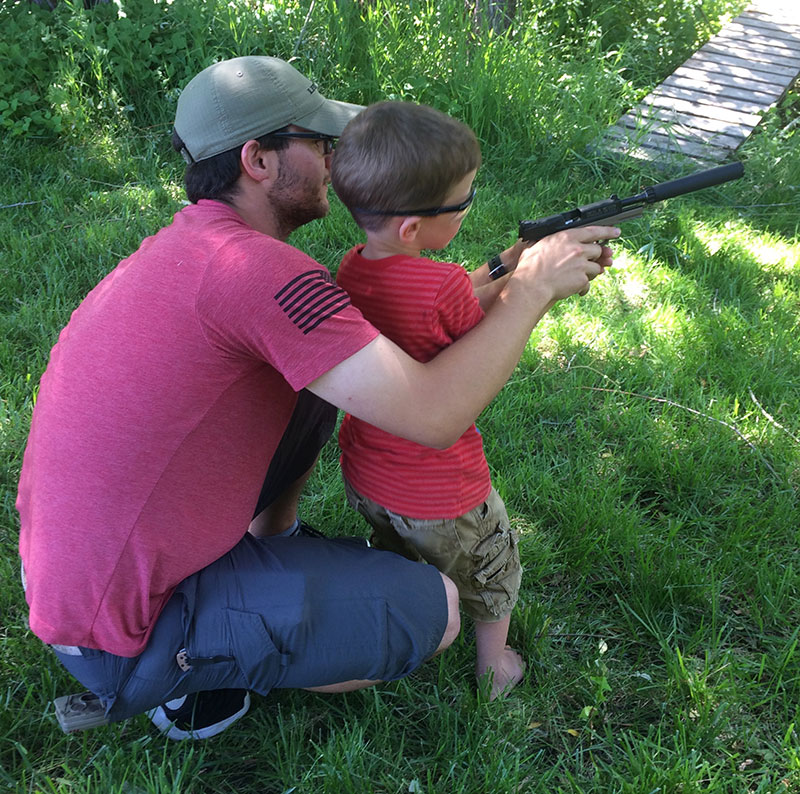
Much of the flinch incurred by new (and experienced) shooters comes from the muzzle blast and recoil of a weapon. Suppressors minimize much of that blast, noise, and recoil. The downsides are back pressure and gas blowback. The use of adequate eyewear protects against blowback debris in the eyes and adds a layer of confidence to the shooter.
Finally, dry fire is also a useful training tool for teaching stance, trigger manipulation, grip, etc.
[Editor’s Note: Extensive dry fire with a .22 should be avoided, as it may break the firing pin from repeated strikes on the chamber, or more commonly peen the chamber, creating problems with functioning.]
SUMMARY
Many of us grew up in a different time, when guns were seen as tools and it was no big deal to have a rifle in the window of the truck you drove around town. Many schools had CMP ranges in their basements, and gun safety and marksmanship were standard extracurricular activities.
While those days are gone and firearms are currently under the undeserved stain of bad publicity from the predominantly left-biased media, we can each make a difference by teaching the next generation of shooters how to be safe and effective with positive experiences.
And they are, or will be, future voters….
